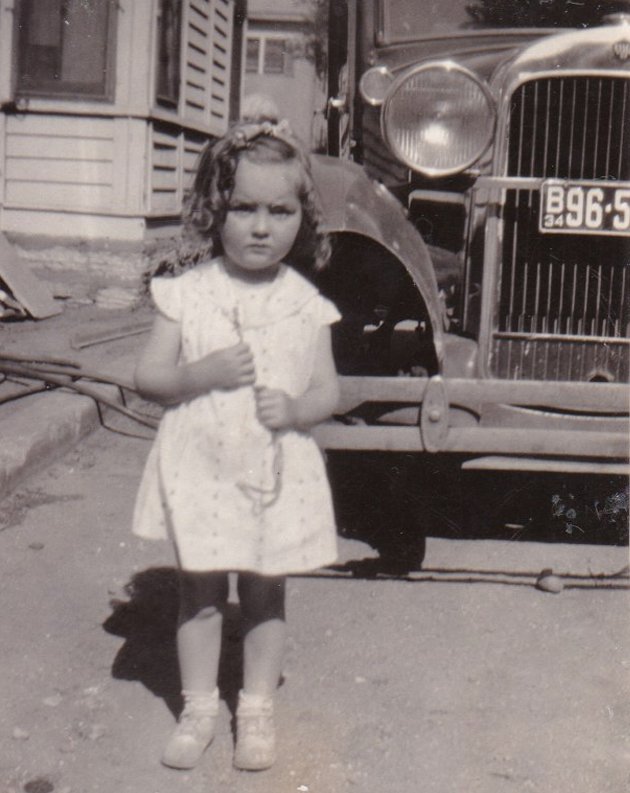Menu
1933

2914 Portland Avenue,
Minneapolis, Minnesota

The Kid
During Christmas eve, 1933, a four-year-old boy enjoyed a very special Christmas he will never forget. He lived in a small apartment, with postage-stamp-sized rooms, in the upstairs of this very house along with his Mother, Dad, and two older brothers, aged 12 and 15. The year, 1933 was in the middle of a great depression when most people didn’t have much money or food, he was a happy little guy who knew he was much loved by his caring family.
That year, in the months before Christmas, had been a sad time. Thousands of dads had lost their jobs; banks had closed leaving people without bank savings, and thousands wandered the streets looking for work and begging for food.
The Kid remembers the particularly sad story of a pipe-smoking neighbor who lived in the house next door to 2914 Portland Avenue. Without a job or money, Mr. Johnson became so sad and discouraged he took his own life. The Kid’s parents explained that God loved Mr. Johnson, and if he had been a good man, loving Jesus, someday Jesus would return and give him a new, forever life. When the Kid kneeled down by his bed to say his evening prayers, he would remember to pray for Mr. Johnson and all the other starving families in the world.
The four-year-old Kid, who lived in that upstairs apartment, had a Dad who pastored a Stevens Avenue, Minneapolis, Seventh-day Adventist Church. He didn’t get paid a lot of money but the Kid didn’t notice since there seemed always enough to eat.
As to sleeping, arrangements were less than ideal: he didn’t have his own closet since he didn’t own many clothes anyway, and he didn’t have his own bedroom as the apartment was too small and crowded; but perhaps worst of all, not only did he have to sleep in his Mom and Dad’s bedroom, his bed was the same too-small wooden crib he had slept in for the last three or four years.
But he never complained.
He doesn’t remember feeling cold. The apartment was heated by a giant coal furnace, located in the basement, that kept the entire house warm, even when the snow piled high and deep outside. Occasionally a coal truck backed into that narrow drive just left of the house and sent a ton of coal cascading down a chute, through a basement window, into a dusty, basement coal bin. Someone from the Brennan family, the owners of the property, would go to the basement every day, pick up a large coal shovel and stoke the furnace to keep it burning all night and day.

Patsy Brennan
The Brennan family lived on the first floor of the house. In addition to Mr. and Mrs. Brennan, their four children lived with them on the ground floor: Dot, the oldest; Miles, a bad-tempered teenager; Bud, a great ice skater, training for the Olympics (Bud was killed in World War II); and Patsy, a cute little girl near the age of the Kid.
The Kid made himself at home with the Brennan household, occasionally wandering into their home turf, unannounced and probably uninvited.
Mrs. Brennan’s brother hung out with the Brennans. The Kid remembers seeing him there during one of his forays into the Brennan home turf. The Kid’s Mom explained that the war veteran brother had learned to drink liquor while serving in the Army during World War I. Sadly, he became addicted to alcohol and spent much of his time sprawled out on the living room sofa, oblivious of what was going on around him.
He also remembers encountering the teenage Dot in the midst of her beauty ritual, with hair piled high in a tower of soap suds, in the midst of washing her hair. Running short of soap, she asked the curious Kid to go to the corner Ma and Pa grocery to buy a specialty soap brand, probably Camay, “the soap of beautiful women.” When he assured her he could remember the magical brand name, she gave him some change and sent him on his way. Of course, he forgot the name by the time he reached the store, handed over the change and asked for a “bar of soap.” A mortified Dot reacted in dismay but had to make do with a bar of Ivory, described in its promo as the “soap that floats.”
When Christmas came, the Kid’s Dad waited traditionally until Christmas eve to buy a tree. By then, only scrawny, scraggly scrubs were left, on sale for a quarter, or even a dime. That 1933 tree proved to be the scrubbiest of scrubs. It “towered” no taller than three feet with many branches drooping wearily, or missing entirely. Its needles, while fragrant, were brittle, turning brown and dying. Undeterred, the resourceful Dad cut off branches from the backside and wire them to the front. He then stuck the tree in the corner of that living room to hide its naked backside.

The scrubby little Christmas tree, with the wired-on branches, found refuge in the corner of a Portland Avenue’s apartment tiny living room. Though short in sparkle, the Kid saw a tree glowing in splendor.
There were a few of the big, old-fashioned, multi-colored lights that had seen many Christmases past that remained available for decoration. When a tired light would burn out, a piece of tinsel would be placed in the socket to complete the circuit to keep the surviving bulbs shining. Other bits and pieces of decorations featured popcorn strung on strands of string, and origami paper ornaments crafted by the two older brothers who had mastered the art while serving in Brazil with their missionary parents. Christmas wrapping paper provided resourceful raw material.
This reality seemed irrelevant and incidental to the Kid.
He planned to wait up for the main event—the arrival of Santa Claus. Eventually, the wisdom of older brothers prevailed and the over-adrenalized youngster went off to bed to assure Santa’s arrival. Finding him too hyper to sleep, the brothers eventually burst into the room announcing Santa’s arrival and departure. Adrenalized with expectation, the youngster still remembers rushing into that mini-sized, upstairs living room to explore evidence of Santa’s generosity.
Now it seems the Kid liked to build things with tools such as a saw and a hammer. Working in the mini-sized kitchen at the feet of an incredibly patient mother, he had, at one time used old wooden boxes to craft an “ice-box.” When the Dad saw this imagined work of art, he rewarded the Kid with a gift nickel and hearty congratulations. That moment, Santa spotted a winner of an idea for the perfect Christmas gift.
This was a time before refrigerators when families would keep food cool in a piece of hand-crafted oak furniture with a door at the top where the iceman could deliver a block of ice. The ice would chill the contents of the box enough to keep food from spoiling. When the ice melted, the runoff would drip down to a pan at the base that had to be emptied regularly to avoid overflow onto the kitchen floor.
The ice wagon was drawn by a horse. The friendly iceman, known to the neighborhood, delivered ice to a home by clamping a chunk of ice with oval-handled steel tongs and hoisting it to his shoulder, protected by a leather patch. The ice cake could range in size from 15 to 35 or more pounds depending on the number displayed at the top of a card placed in the front window of the home.
Not waiting for Christmas morning, the four-year-old Kid spotted multiple strings strung out from the trunk of the Christmas tree reaching out of sight, across the living room’s floor. But where was the present? Big brothers advised him to follow the strings. Sure enough, at the end of one string, he found a hammer, under the couch; another led to a small saw, hiding under a living room chair; another to pliers; and the big bonanza proved to be a shiny, hollow-handled brass screwdriver, with a screw-on cap at the top of the tube. Take off the cap and inside were two or three smaller and smaller screwdrivers, each inside the previous larger one.
Many Christmas celebrations later, the Kid still remembers that 1933 Christmas past when he discovered a complete set of tools waiting for him, tied to the end of those long, promising strings that led to an all-time height of Christmas joy.
What he doesn’t remember is what the two brothers, and the Mom and the Dad, received, for their Christmas that depression year—if anything. Given that 1933 money shortage, the now ancient Kid wonders if the rest of the family maybe sacrificed gifts for themselves in order to bring joy to the heart of a four-year-old who loved to build things. He doesn’t know the answer. What he does remember is what he learned from experience, by the example of unselfish family love:
it’s more blessed to give than to receive.
WLJ
© 2023 Warren L. Johns. All Rights Reserved.
Genesis File is an educational website.
While not a format for debate, the Editor welcomes all good faith contacts.